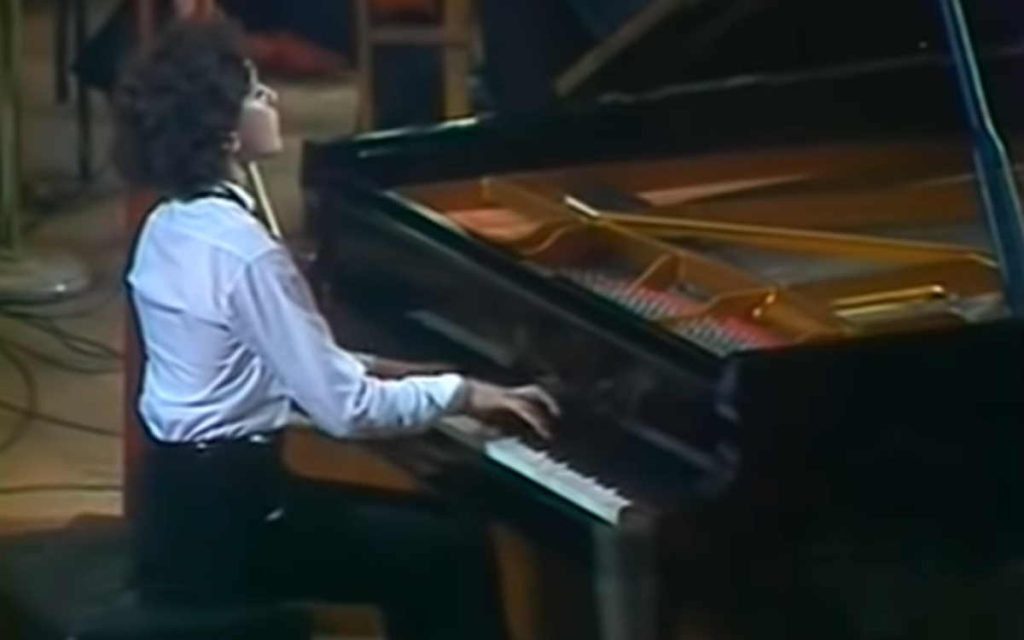Accompanied by the Netherlands Chamber Orchestra, the Dutch classical pianist Lucas Jussen performs Frédéric Chopin’s Piano Concerto No. 1 in E minor, Op. 11. Concertmaster: Gordan Nikolić.
Frédéric Chopin’s Piano Concerto No. 1
was composed in 1830 when the composer was only 20 years old. Despite being published after the Piano Concerto No. 2, the E minor concerto was actually composed first, hence the number “1” can be misleading.
It was first performed on October 11 of that year, at the Teatr Narodowy (the National Theatre) in Warsaw, Poland, with the composer as soloist, during one of his “farewell” concerts before leaving Poland.
Movements
With start times in the video:
- Allegro maestoso 00:00
- Romanze – Larghetto (E major) 23:11
- Rondo – Vivace in E major 35:14
1. Allegro maestoso
The first movement of Frédéric Chopin’s Piano Concerto No. 1 in E minor, Op. 11, is marked Allegro maestoso, signifying a pace that’s quick and brisk, yet majestic in character. This movement showcases the composer’s mature style and his penchant for beautiful melodies and intricate piano parts.
The movement begins with an orchestral introduction, setting the stage with a dramatic declaration of the first theme. This theme is serious and stately in nature, and it’s developed extensively by the orchestra before the piano makes its entry. The piano, once it enters, introduces its own lyrical theme, showing off Chopin’s virtuosic writing style.
The structure of the movement follows the traditional sonata form, which includes exposition, development, and recapitulation. The exposition presents the main musical themes, which in this case involve a series of dramatic and lyrical ideas. These themes are then developed in the development section, where Chopin explores different keys and elaborates on the themes.
Following the development section is the recapitulation. Here, the original themes return, but they are often altered or reinterpreted in some way. This return to the familiar material provides a satisfying sense of closure to the movement.
Throughout the movement, Chopin’s writing for the piano is demanding and intricate, requiring considerable virtuosity from the performer. Yet the music never loses its sense of lyrical beauty and expressiveness, hallmarks of Chopin’s style. The first movement of this concerto demonstrates Chopin’s remarkable ability to combine technical brilliance with deep musicality. Despite the virtuosic demands, the music always serves an expressive purpose, resulting in a movement that is as emotionally rich as it is technically challenging.
2. Romanze – Larghetto
The second movement carries the marking Romance – Larghetto, meaning it’s meant to be performed in a slow and broad tempo. This movement is often viewed as the emotional heart of the concerto, presenting a significant contrast to the dramatic and brisk pace of the opening movement.
The Romance-Larghetto commences with the piano offering a gentle, singing theme, showcasing Chopin’s gift for lyrical melodies. The theme is truly romantic and poignant in nature, portraying a sense of longing and wistful sentiment. The strings of the orchestra answer the piano’s theme, setting up a dialogue that plays out over the course of the movement.
Throughout this movement, the piano part is decorated with elaborations and ornamentations that reflect Chopin’s signature style, full of subtle shifts in harmony and delicate, intricate textures. The orchestra provides a warm, lush backdrop to the piano’s soliloquies.
There’s an intimate, introspective character to this movement that sets it apart from the other movements of the concerto. Its tranquil lyricism, imbued with subtle harmonic nuances, creates a profound emotional resonance.
Many scholars and musicians have speculated that this movement was a musical declaration of Chopin’s love for the young soprano Konstancja Gładkowska. The deeply felt emotions and the tender, song-like melody certainly seem to suggest a personal and passionate expression of feeling.
As a whole, the Romance – Larghetto stands as one of Chopin’s most touching and expressive pieces, a testament to his gift for writing beautiful melodies and his understanding of the expressive capabilities of the piano. Despite its technical demands, the focus of this movement is clearly on expressive, emotional playing, making it a favorite among both performers and listeners.
3. Rondo – Vivace
The finale of Frédéric Chopin’s Piano Concerto No. 1 in E minor, Op. 11, is marked Rondo – Vivace. A rondo is a musical form that features a main theme that returns repeatedly, interspersed with contrasting sections. “Vivace” is an Italian term indicating a lively, brisk tempo.
This movement is characterized by its vivacious energy and sparkling piano parts, providing a bright and cheerful contrast to the introspective and emotionally rich second movement. The piano introduces the main theme immediately, a playful and lively tune that reflects the joyous spirit of Polish folk dance.
Chopin’s heritage and his love for his native country’s folk music are apparent in this movement. The rhythms and melodies are reminiscent of the traditional Polish dance called the Krakowiak. This provides the movement with a vibrant, dance-like character that brings the concerto to an exhilarating conclusion.
The piano writing in this movement is technically challenging and requires a high level of virtuosity from the performer. The music often demands rapid, delicate fingerwork and a clear touch to bring out the lively rhythms and intricate ornamentations that are so central to Chopin’s style.
Throughout the movement, the soloist and orchestra engage in spirited exchanges, creating a dynamic interplay that adds to the overall excitement and energy of the piece. Despite the technical demands and brisk pace of the movement, the music retains a sense of elegance and lyricism, demonstrating Chopin’s ability to blend virtuosity with expressive depth.
The third movement of Chopin’s Piano Concerto No. 1 is a showcase of the composer’s innovative piano writing, his connection to his Polish roots, and his ability to convey a wide range of emotions and characters within a single work. The Rondo-Vivace leaves the audience with a sense of joy and exhilaration, providing a triumphant conclusion to the concerto.
Sources
- Piano Concerto No. 1 (Chopin) on Wikipedia



